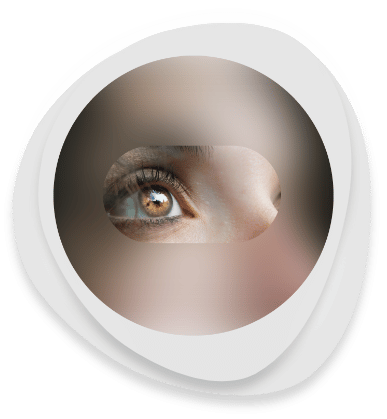October 2023
Would you like to reduce or eliminate your need for glasses? Reading, computer, and distance?
Restorative or “Refractive” Lens Exchange (RLE) is an innovative, intraocular surgery that offers excellent vision results for individuals with refractive errors like myopia (nearsightedness), hyperopia (farsightedness), astigmatism and presbyopia (loss of near focusing ability)., RLE works identically for cataract surgery, but instead of replacing a cloudy lens, it simply removes the clear natural lens of your eye and replaces it with an artificial intraocular lens (IOL). This IOL can correct the refractive error and give you sharper vision both near and far. It is a safe, painless, quick procedure. After age 45, RLE can often correct refractive errors better than LASIK or PRK. Another nice feature is that RLE provides permanent vision correction. Best of all? It prevents cataracts! Yes, that’s correct, you will not need cataract surgery later in life.
How Is The Refractive Lens Exchange Procedure Performed?
RLE is performed as an outpatient procedure and takes about 15 minutes/eye. Commonly, both eyes are done at the same time. You’ll experience very little to no discomfort during the procedure, as anesthetic eye drops will be used to numb the surface of your eyes and you will be given oral medications to keep you relaxed and comfortable. Once your eyes are properly numbed, our surgeons will use a laser to make a micro-incision around the outer edge of the cornea, giving us access to your eye’s natural lens.
An ultrasonic instrument, known as a phacoemulsification device, is used to break up and remove the natural lens via sound waves. After your natural lens is removed, an artificial lens (IOL) is inserted in its place, and the incision around the outer edge of your cornea is closed (no stitches required). The role of the artificial lens (IOL) is to focus light on your retina, correcting any refractive errors present in your vision, while also addressing the loss of near-focusing power – providing you with clear, stable, and comfortable vision.
You’ll likely feel some pressure during the procedure, but no pain.
Artificial Lens Options With RLE Surgery
Depending on your individual vision needs, you may be given the option to choose between a few different artificial lens (IOL) options. The most common include:
A monofocal (single focus) IOL is designed to correct only one type of refractive error, such as myopia. It will give you high-quality vision at one focal point and is most often recommended for those who are nearsighted and need to see long distances. It can be combined with monovision.
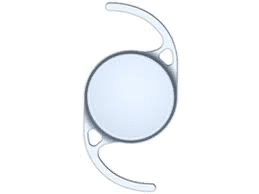
An extended depth-of-field (EDOF) IOL is designed to correct several refractive errors. It’s a great option for individuals who need high quality vision at both far and intermediate distances. It can help reduce your dependency on glasses, although you may still need reading glasses for small print.
A trifocal IOL will give you the ability to see near, intermediate, and far distances. The dependence on prescription glasses or contact lenses with this IOL is usually eliminated entirely.
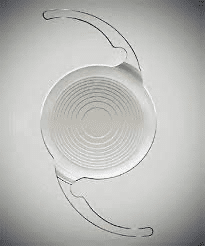
A toric IOL is great for individuals who have pre-existing astigmatism, as it corrects this type of refractive error.
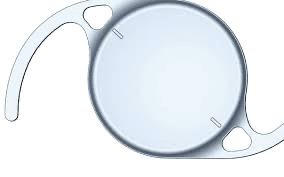
A small aperture IOL can correct for astigmatism while giving a greater depth-of-field, meaning that these patients can see equally well at a distance, intermediate, and near.
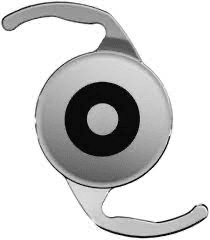
A light adaptable IOL. The shape and power of these lenses can be altered after they have already been implanted into the eye. These lenses give great flexibility, allowing patients to personalize their vision correction exactly as they want it. Stronger distance or stronger near or a balance of both.
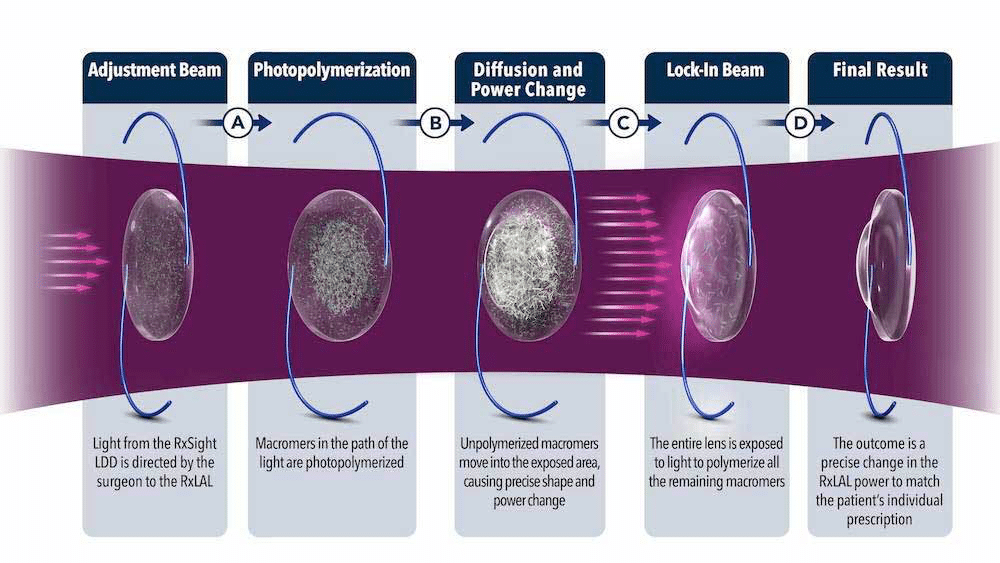
The types of IOL lenses that are viable for your RLE surgery will be discussed with you during your consultation.
What Are The Benefits of Receiving RLE?
The primary benefit of Refractive Lens Exchange is that it offers a long-term solution for individuals over the age of 45, who need to correct refractive errors and address presbyopia (the loss of near vision). Other benefits include:
- You become less dependent on eyeglasses and contact lenses, with most patients no longer requiring any glasses.
- You no longer have to worry about developing cataracts or needing cataract surgery later in life.
- RLE corrects refractive errors in individuals not suited to LASIK or PRK, from mild to very strong errors.
- The recovery time is very quick; 24 hours is all you need to return to normal activities.
- It may be more comfortable for some patients, as oral sedation is used
- It improves vision at all distances – near, intermediate, and far.
- It can also improve night vision, reduce glare, and increase your depth perception.
Who Is RLE Suitable For?
As we age, our natural lens loses its flexibility. Around age 45, most people have a lens that has lost its ability to accommodate (this process is called presbyopia). This means they no longer can focus from distance to near and need some sort of glasses to help with reading. Any patient older than 45 may want to consider RLE as their best, most stable, long-term vision correction option as artificial lenses begin to function better than natural lenses after this age.
Refractive Lens Exchange is also suitable for individuals who do not qualify for laser corneal surgery (LASIK/PRK) due to irregular or very thin corneas, and who still wish to eliminate their dependency on prescription eyeglasses or contact lenses. It is commonly recommended for individuals between the ages of 45-65 who are worried about age-related, near vision loss, and who do not have a history of eye disease. If you’re experiencing blurry vision, difficulty reading, or have constant headaches, and eyestrain, and find that holding items at arm’s length helps you focus clearly on them, then RLE may be right for you.
Preparation, & Recovery.
To prepare for your RLE surgery, you may need to stop taking certain medications and use provided antibiotic eye drops ahead of time. You will need to arrange for someone else to drive you home as RLE is performed using oral sedation and the vision is going to be blurred for 24 hours afterward.
While the initial recovery time is within 1-2 days, you may not be able to complete strenuous activities for upwards of a few weeks. You can expect some mild discomfort and pain as the anesthetic wears off, but over-the-counter pain medication can effectively relieve this. Post-surgery instructions include taking the prescribed eye drops to avoid infection, avoiding getting soap and water in your eyes for the duration of your recovery, and wearing an eye patch or protective shield to help your eyes recover faster.
Post-operative appointments will be booked with you to monitor the healing process. These are commonly booked 1 day after the surgery, and then again 3-4 weeks out. The majority of patients are highly satisfied with the results of their RLE surgery, noting a significant improvement in overall vision, sharpness, and clarity.
Ready To Learn More About RLE?
To learn more about RLE, connect with one of our specialists here at OVO LASIK + LENS to determine if RLE is the right solution for you. We offer a free consultation and always aim to provide our patients with the best care possible. Our experienced RLE surgeons are highly skilled and knowledgeable and will provide you with personalized care to ensure your RLE experience is successful. We are committed to helping you achieve clear, crisp vision without the need for eyeglasses or contact lenses. Take the first step to a better vision today – book your RLE consultation with us!
NEWS + PRESS
Schedule Your Free OVO Lasik
Consultation Today!

We’ll never share your details.


